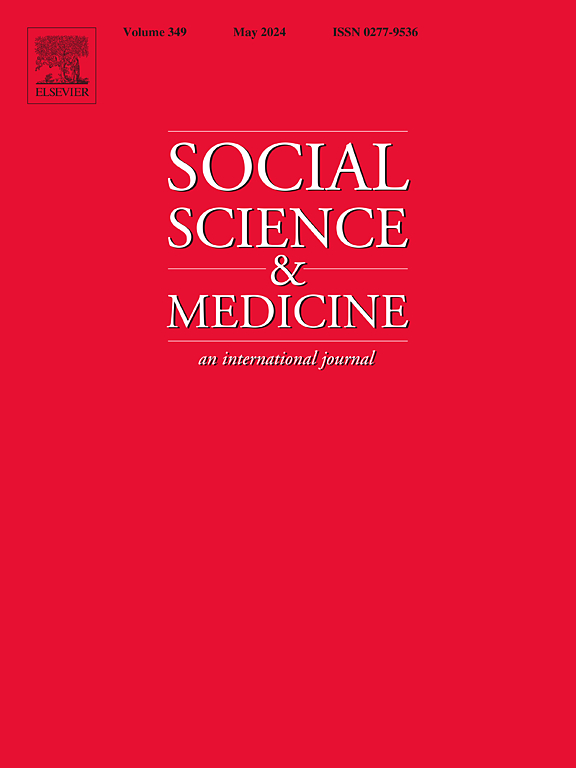评估动态实时绿地暴露的瞬间压力反应:揭示算法的不确定性和暴露背景的时间性。
IF 4.9
2区 医学
Q1 PUBLIC, ENVIRONMENTAL & OCCUPATIONAL HEALTH
引用次数: 0
摘要
现代城市居民的精神压力问题日益突出。在与缓解压力相关的环境因素中,绿地一直被证明具有显著的减压特性。然而,在过去的研究中,绿地暴露的时间性,尤其是城市环境中的累积阈值效应,在很大程度上被忽视了。此外,不同的算法及其相关的绿地测量方法也导致了不一致的心理健康结果。为了弥补这两方面的不足,我们通过整合三种不同的绿地测量方法:归一化差异植被指数(NDVI)、绿地面积比(GSAR)和基于个人实时 GPS 数据的眼平绿景指数(GVI),对 221 名香港居民的动态绿地暴露进行了评估。随后,我们通过生态瞬时评估(EMA)测量了个人的瞬时压力水平,并在不同的累积时间框架内使用混合序数逻辑回归法模拟了其与动态绿地暴露的关联。结果显示,在不同的绿地测量方法和不同的累积时间范围内,绿地与压力之间的关系存在巨大差异:(1)在三种测量方法中,GVI 是评估城市环境减压效果的最可靠、最有效的测量方法。(2) 在特定时间范围内,累积暴露比瞬间暴露具有更明显的减压效果。(3) 累积的眼平绿地暴露的减压效果表现出两个时间阶段:持续暴露 12-36 分钟会导致眼平绿地的压力缓解效果逐渐增强,最初达到峰值,36 分钟后减弱。当暴露时间延长至 2.3 小时时,水平视线绿地的压力缓解效果再次达到顶峰,然后逐渐减弱。我们的研究强调,需要对环境暴露进行多重测量,以解决环境健康研究中算法的不确定性,并深入了解绿地与心理关系的时间性。本文章由计算机程序翻译,如有差异,请以英文原文为准。
Assessing momentary stress responses to dynamic real-time greenspace exposure: Unveiling algorithmic uncertainty and the temporality of exposure context
Mental stress issues are emerging among residents of modern cities. Among environmental factors associated with stress mitigation, greenspace has consistently been shown to have significant stress-reducing properties. However, the temporality of greenspace exposure, particularly the cumulative threshold effect in urban environments, has been largely neglected in past studies. In addition, different algorithms and their related measurements of greenspace have led to inconsistent mental health outcomes. To address both gaps, we evaluated the dynamic greenspace exposure of 221 Hong Kong residents by integrating three distinct green space measurements: the Normalized Difference Vegetation Index (NDVI), the Green Space Area Ratio (GSAR), and the Eye-level Green View Index (GVI) based on individual real-time GPS data. We subsequently gauged individual momentary stress levels via Ecological Momentary Assessment (EMA) and modeled its association with dynamic green space exposure using mixed ordinal logistic regression across diverse cumulative time frames. The results reveal great disparities in greenspace-stress association between different greenspace measurements and different cumulative time frames: (1) Among the three measurements, GVI is the most robust and effective measurement in assessing the stress-reducing effect in urban environments. (2) Within specific time frames, cumulative exposure has a more pronounced stress-reducing influence than momentary exposure. (3) The stress-reducing effects of cumulative eye-level greenspace exposure exhibit two temporal phases: A continuous exposure spanning 12–36 min leads to a progressive enhancement in the stress-mitigating effect of eye-level greenspace, peaking initially and then diminishing after 36 min. Upon extended exposure reaching 2.3 h, the stress-alleviating impact of eye-level green space peaks once again before gradually waning. Our research underscores the need for multiple measurements of environmental exposure to address the algorithmic uncertainty in environmental health research and deeper insights into the temporality of the greenspace-mental relationship.
求助全文
通过发布文献求助,成功后即可免费获取论文全文。
去求助
来源期刊

Social Science & Medicine
PUBLIC, ENVIRONMENTAL & OCCUPATIONAL HEALTH-
CiteScore
9.10
自引率
5.60%
发文量
762
审稿时长
38 days
期刊介绍:
Social Science & Medicine provides an international and interdisciplinary forum for the dissemination of social science research on health. We publish original research articles (both empirical and theoretical), reviews, position papers and commentaries on health issues, to inform current research, policy and practice in all areas of common interest to social scientists, health practitioners, and policy makers. The journal publishes material relevant to any aspect of health from a wide range of social science disciplines (anthropology, economics, epidemiology, geography, policy, psychology, and sociology), and material relevant to the social sciences from any of the professions concerned with physical and mental health, health care, clinical practice, and health policy and organization. We encourage material which is of general interest to an international readership.
 求助内容:
求助内容: 应助结果提醒方式:
应助结果提醒方式:


